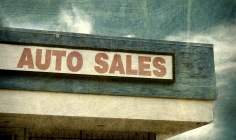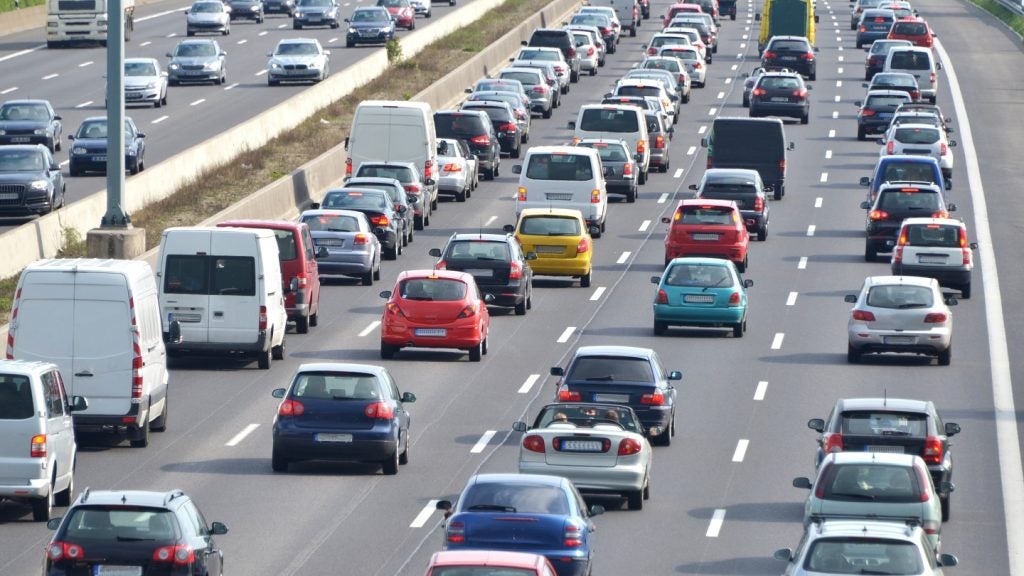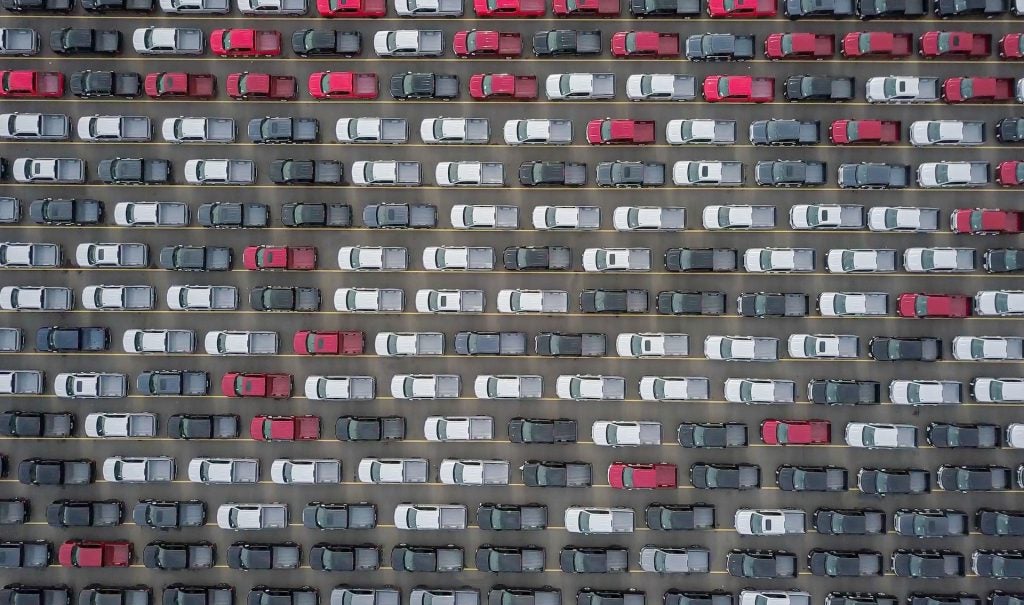
Jonathan Minter examines the remarketing industry to see what has been influencing the market, what the latest trends have been, and how the internet has revolutionised the way auction houses do business.
Auction houses can often act like an echo of the new car market. What happens in the new car sector will, a few years later, have some very direct influences on the quantity and quality of cars available at auction, as well as the type of cars right down to the prevalence of certain colours. But the auction houses are not complete reflections, as independent factors such as present confidence and trends also influence demand, and, as such, the industry is a unique mix of both the past and the present.
As with any area, the industry is made up of a variety of players. The National Association of Motor Auctions (NAMA) represents a number of these. According to head of NAMA Louise Wallis, the industry is made up of a top five, followed by a number of smaller auctions. She says "You’ve got British Car Auctions (BCA) which is the biggest. It sell something like a third of all vehicles. Manheim follow as number two, and then you’ve got a group of Wilsons Auctions, Aston Barclay and SMA Vehicle Remarketing. They’re the top five. The rest of the group is made up of generally independents, some bigger than others. So it’s quite spread, but there are only between 90-100 auction sites in the UK."
According to Wallis, the operational differences between the bigger players and the smaller ones are mostly to do with scale. Although there may be a slightly more corporate feel among the larger auction houses, she points out, even Wilsons and Aston Barclay remain family-owned.
Regardless of scale, the past 12 months appear to have been relatively good for most auction houses, though Daren Wiseman, valuation services manager of Manheim emphasises the use of the word "stable".
According to BCA UK operations director Simon Henstock: "The ongoing relative shortage of stock – a result of low new car sales over several years following the onset of recession – has helped keep values high. It’s simply a consequence of supply and demand, and the long-term trend for used car values has been relentlessly upwards – the average fleet car is selling for over 17% more in 2014 than in 2012."
How well do you really know your competitors?
Access the most comprehensive Company Profiles on the market, powered by GlobalData. Save hours of research. Gain competitive edge.

Thank you!
Your download email will arrive shortly
Not ready to buy yet? Download a free sample
We are confident about the unique quality of our Company Profiles. However, we want you to make the most beneficial decision for your business, so we offer a free sample that you can download by submitting the below form
By GlobalDataFor Andy Brown, managing director for CD Auction Group, which is not a member of NAMA, the market has also been very good this year. He says: "For both cars and commercial vehicles, the market has been very strong." He adds: "Good condition cars will sell very quickly for good money."
According to NAMA statistics, the average price of a used car in September 2014 was £5,395, 5% above the £5,116 recorded in September 2013. In the same period, the average mileage increased by just 696 miles to 66,558 miles and the average age increased from 82.3 months to 84.2 months.
This is consistent with what most industry insiders tell Motor Finance. For example, Brown says: "The type and age of vehicles that we’re getting is pretty consistent through the year."
Therefore, as prices have increased despite stock remaining reasonably consistent in terms of age and mileage, or even slightly increasing in age and mileage, it stands to reason that a lack of cars coming in is a big part of why prices have increased. As Wallis says: "There’s strong demand from consumers for used vehicles, and there has been a shortage of the right stock available to supply that demand. This has pushed prices up. Also dealers have kept hold of the part exchange rather than put them into the auction, because they know it’s difficult to get stuff at auction, or they can’t get what they want."
However Wiseman says there are a number of other reasons why prices have crept up: "New models have come to the market, certainly from the fleet sector. When a new model hits the market first time around, values tend to be strong. An example of that would be the Range Rover Evoke – the first leased three-year-old 60,000 mile Evokes are coming back and are making very good money."
From a specifically Manheim perspective, Wiseman says: "The year-to-date summary is prices have remained very consistent and stable. Supply has remained consistent and stable year-on-year, and the retail market has been reasonable. It’s not been overexcited, it’s not been dramatically buoyant, but it’s matched supply."
Prices have also risen at Manheim, but there were other reasons for this: "Our average sale price has risen because our profile of customer has improved a little bit. We’ve also got some new, lower mileage cars to sell overall."
One change that has occurred over the previous year is a slight dip in the typical glut in cars entering the auction houses that traditionally occurs every year following the September plate change.
Wiseman says: "In the old days, when we had an August plate change, the part exchanges all landed in the first two or three weeks of August. Now they sell a car on the first of September, and then there is a long lead time for manufactures because it’ll be a factory order.
"This has a knock-on effect because it means we don’t see a massive glut of vehicles through September. We see a steadier increase in supply through September and October. So we see the same volume of cars we’ve historically seen, but they’re spread over two months."
According to BCA’s Henstock, the market absorbed what increase in supply occurred in September, and prices remained strong. He adds: "Average values in October and the early autumn months have been very strong in the used car market without any significant fluctuations in demand."
The past two years have seen a noticeable uptick in new car registrations. For example, according to SMMT figures, there were 425,861 cars registered in September 2014, compared to 403,136 in the same month in 2013, and 359,612 in 2012.
2012’s figure itself was, at the time, the highest number recorded since 2009, which were themselves artificially inflated by the Government’s scrappage scheme.
As a result, Wallis has noticed an increase in the number of young cars in the 6 to 12-month-old sector. At the same time: "There is also quite a lot of older stock coming in from part exchanges because consumers have been hanging onto cars for longer through the recession, and over the past few years they’ve come back in more numbers."
She says there has been an increase in the number of three-to-five-year-old cars, but not enough to keep up with demand generally.
Looking ahead
One of the big trends in motor finance over recent years has been the rise of personal contract purchase agreements when buying cars. In October 2014, for example the Finance & Leasing Association (FLA) revealed that the value of total PCP agreements in motor finance in August was worth £432m in the new car market, up 54%. In comparison, the total value of finance for new cars was £606m – up 31%. Therefore PCP grew faster than the already fast-growing motor finance industry in general, and PCP deals made up 71.29% of all finance agreements made in August.
NAMA is intending to look at the effects PCP will have on the remarketing industry in the future, but for now Wallis is willing to say: "I think we’re going to see a lot more two and three-year-old cars coming over the next year. People won’t keep hold of those cars. Very few people will keep hold of a PCP car because of the pressure from manufacturers to register another car, so people will be incentivised to make sure they part exchange that car, one way or another."
She says it is currently unknown at this stage how well the used car market will be able to absorb these new cars coming back, but says it will have an impact on price.
For Brown, even though CD Auction Group doesn’t tend to deal with companies that offer PCP, it will start to have an effect next year, due to the generally increased stock of two-to-three-year-old cars coming onto the market.
Manheim has found that PCP has, in some respects, almost constrained supply. Wiseman says: "PCP has created a source of nice retail stock for the dealers. And as a result we’ve probably not seen as many of those two-to-three-year-old cars hitting the auction. We obviously still get contract hire and lease cars, which are two and three years old, but they tend to be of a higher mileage than the PCP stock around.
Most sceptical is BCA’s Henstock, who says any impact on PCP needs to be considered in the wider used car marketplace: "The reality is that the market has strength in depth to absorb growing volumes as demand picks up alongside improving economic conditions.
"There are always issues of supply and seasonality to consider, as well as model mix and specification and this is where the remarketing sector has a critical role to play. The effect of the returning PCP volumes on wider residual values will depend on managing these cars back into the marketplace in an orderly fashion. As always, attractive, well-specified ready-to-retail cars in good colours will generate the best returns for sellers, whatever the market conditions."
Henstock acknowledges that the market is changing, however, as increasing new car sales over the past year or two will inevitably bring greater volumes to auction, and advises volume sellers to review their pricing strategies to reflect the changing dynamic,
in particular for cars considered ‘less attractive,’ or those in unpopular colours, with a high mileage or requiring repair work.
According to Brown, in general cars are being sold in relatively good condition at the moment. White is the colour of choice at the moment, he says, while mileage has crept up slightly.
He echoes Henstock’s belief that the condition of the car is important and CD Auction recommends sellers spend some money doing repair work before sending vehicles off to auction. Despite this, he says the majority of sellers don’t want to invest in this part of selling a car, instead preferring to take the hit on the eventual sale price of the car. However he adds there have been a few instances where badly damaged cars have required repair work in order to sell at all.
While opinions on what effects PCP will have on the remarketing, there is more agreement on when the volume of cars is likely to catch up with demand, with everyone suggesting either late 2015 or 2016.
The one possible hiccup is the 2015 general election; however Manheim’s Wiseman says he doesn’t think it will have a massive impact, as he doesn’t see any party making a dramatic statement or move.
One area where volumes will probably increase is in alternative fuel vehicles. Although they held a market share of 2% for 2014 to the end of October, this was up from 1.4% in the same period the year before, and sales were up 51.2% in that period.
According to Brown, CD Auction Group hasn’t seen electric cars coming through it yet, however he anticipates this picking up over the next two years, as models such as the Nissan Leaf, which have become increasingly popular make their way back to the remarketers.
For full electric, he says: "The key here is infrastructure. Until infrastructure is sorted, it’s going to be a very challenging part of the market."
Similarly Wallis says that the current sample size of electric vehicles is too small to make a prediction on. However she says: "I think the issue over consumers seeing these vehicles as something that is a viable option has to be addressed first. And I think companies like BMW producing these vehicles where you’ve got dual fuelled vehicles are the way forward because that way you’ve got all the options."
Brown does point out that hybrids have been more successful, which he credits, in part, to council schemes, such as tax incentives for taxi companies that run Prius vehicles.
Recent years have seen the remarketing world revolutionised by the use of the web, and the unanimous feeling is that the web will continue to play an increasingly integral part in the industry for the foreseeable future.
The advent of online has actively contributed a regional price differences being minimised. Wiseman notes: "Because of the advent of online buying, and the ease of buying cars nationwide, those regional patterns have almost disappeared. Distance is not a barrier anymore. The transparency of online auctions, and the auctions website we’ve got, means there’s no need to send cars to a specific area, or to go to a specific area to buy one.
We even have buyers from Europe buying cars online. We have dealers from Ireland buying cars using our Simulcast system, and on the mainland as far away as Turkey buying cars online. The cars that go to export are a bit specialist, so it doesn’t matter if they’re left or right handed because they’re specialist cars. But in Ireland they just need to put on Irish plates and away they go."
According to Wallis, the use of online isn’t exclusive to the larger auction houses, and many of the smaller, independent auction houses are making full use of online. "It means somebody can go to the BCA auctions physically, but they can be bidding online at an independent elsewhere. So it helps everybody." She says.
CD Auctions, which only operates online, has found that the popularity of web-based bidding has increased every year since its inception. Brown is not alone when he emphasises the importance of trust in the process.
He says: "The key thing for me is if you’re selling a car online, you have to describe the car accurately and honestly because you have to gain the confidence of the buyer that he’s looking at stuff, and he knows what he’s buying because he is not physically seeing the car.
While CD Auction are solely online, both Manheim and BCA operate with both physical and online auctions, often with online bidder competing with those at the auction.
At Manheim, Wiseman says approximately 20% of buyers tend to be online at a typical auction, with that number reaching over 80% for certain manufacturer closed sales. However the impact goes beyond this 20% at typical auctions: "60-70%, sometimes 80% of cars will have online bids. This makes prices stronger for the vendor. More people bidding means the prices rise, so it’s not just the number of cars sold online, it’s also the number of bids we get as well.
Additionally, Manheim has seen an increase in the number of online buyers.
The situation is similar at BCA, where Henstock says 25% of cars were sold at hybrid Live Online style auctions.
According to Henstock, big data is another big trend to have emerged over recent years, and is something likely to continue for the foreseeable future: "In simple remarketing terms, there are obvious benefits to target the right vehicles precisely to the right buyers at the right time and the right channel. But beyond this, remarketers will be looking at a wider range of data to inform reserve price setting, such as daily condition adjusted vehicle valuations, buyer demand data and consumer data, such as retail pricing and demand information.
"Take this a step further, and big data could lead to predicting future hot spots of demand or oversupply which could be fed back up the remarketing chain to assist volume vendors."
How long it will take for big data to truly take off is anyone’s guess at the moment. However the general consensus is that, as 2015 progresses and 2016 comes about, stock volume will being to increase. While this may lead to prices coming down, Wallis says: "I don’t think anybody is predicting a major downturn, but prices will probably soften as you get more supply. n







